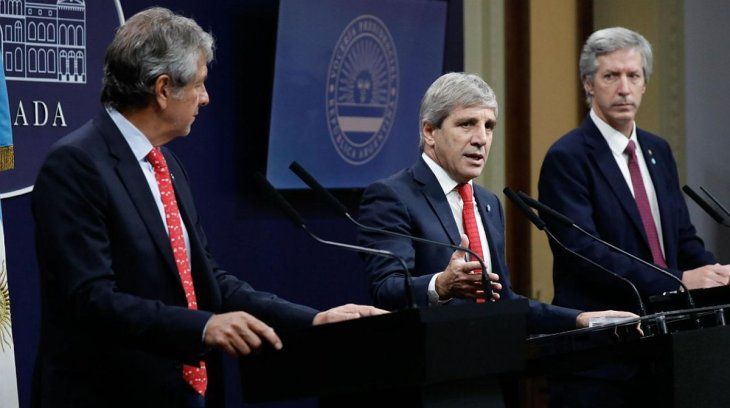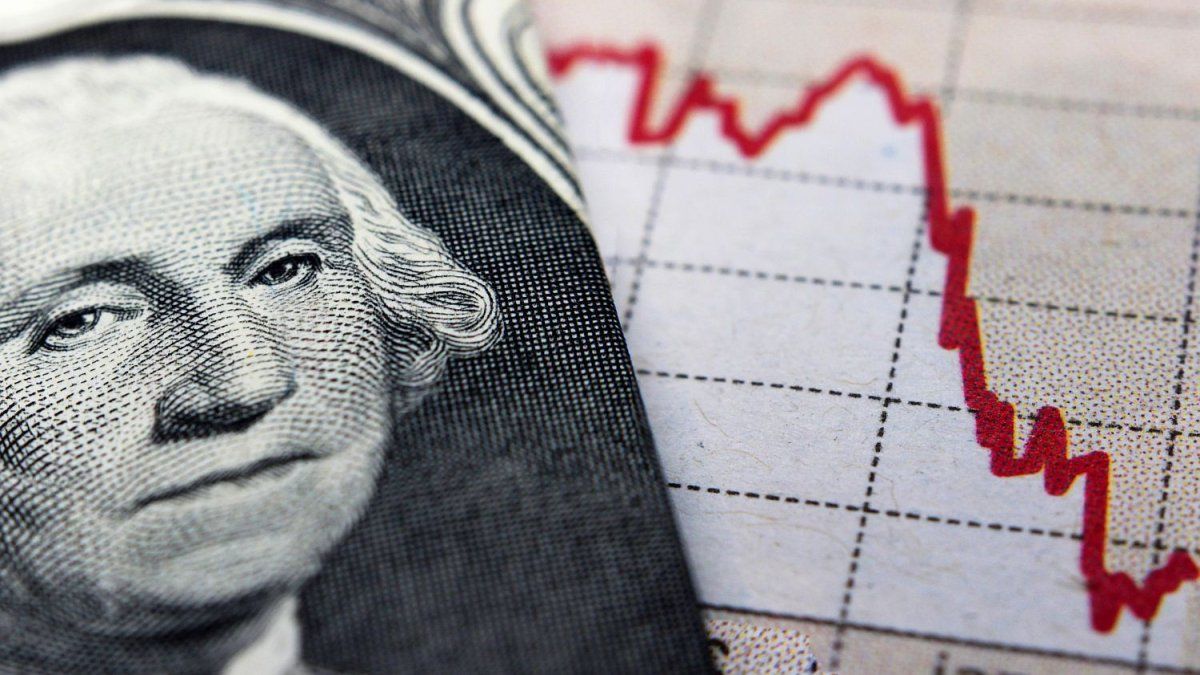Dollar Blue rates Finance Inversiones Vivo
The dollar, key to the stability of the government’s economic plan
Depositphotos
It is known that the government disregards the real economy, but that manages financial mechanisms, its natural habitat. The only objective was to reach October with an inflation that begins with 1 monthly and with the controlled dollar.
But in this July the economic team chained a series of striking “errors” that produced great volatility and amplified uncertainty, with a rise in the exchange rate and the interest rate and negative effects on the real economy.
Let’s look at the facts
As of June 30, the dollar was at $ 1,205, the short -term interest rate (Caóción) 29% per year and the open interest in futures of the dollar at US $ 3,776 million. The future dollar to December was at $ 1370.
The Government claimed that it would not buy dollars despite breaking the reservation goal with the IMF and the inflation projected by 2025 of 27% annual and 20.8% for the next 12 months.
What happened?
Things that could be part of funny “memes” of Julio, but were bad decisions that would affect the economy of the country.
He First act It was the critical report by JP Morgan, a bank in which almost all the economic team of the Ministry of Economy and the Central Bank has worked, this lit the alerts. The dollar rose 60 cents in a week in the first week of July.
Second act: A few days later the government encouraged by the projections of the June inflation that was known on July 14, incurred a bad financial praxis. The Central Bank decided to eliminate a liquidity regulation instrument, the Lefi (descendants of the old Lebacs and Leliqs) and eliminate the mandatory integration of 25% in minimum cash (bank lace) with the aim of lowering interest rates, promoting the indebtedness of families and companies and stimulating economic activity, affected by the fall of the real salary and commercial opening. The Caution rate fell from 29% per year to 16% per year. This stimulated a greater devaluation. The dollar played $ 1280 to July 14 that the good inflation fact was known.
Third Act: On July 10, the day Congress approved various laws and bills repairing various and serious problems (retirees, disability, Bahía Blanca, resources to the provinces) mounts the Fantino operation and unleashes greater uncertainty. After lowering the rate of cion to 16%, the next day, that is, on July 15, the rate bounces to 33%. The dollar goes back to $ 1,260.
Caputo Announcement Economia.jpg

The government’s economic team, with Luis Caputo at the head.
Fourth act: That same July 15, the government that had canceled the Lefis believing that the liquidity would go to a greater volume of credit or greater financing to the State and not to increase the exchange rate, decides to re -accept passive passes (banks deposits in the Central Bank for liquidity surpluses) less than a week to eliminate them. The rates of passes is 36% when the Lefi traded at 29% before its elimination.
Fifth act: The Government decides on July 16 a tender for public titles (LECAPS) out of agenda and validates an annual interest rate of 47%, with a strong rate rise compared to the placement of the previous week, increasing the rate of rate for the State and private companies.
Sixth act: The Government decides a purchase of dollars for US $ 500 million due to the breach of the reserve goal to achieve the quarterly approval of the IMF. Buy at a exchange rate of $ 1275 and on average of the month to $ 1248 when he could buy reservations from April to June around $ 1100, at a lower cost and minimizing the exchange delay and volatility.
Seventh act: The short -term cion rate reaches 100% with a exchange rate of $ 1,286. Credit is paralyzed.
Eighth act: On July 22 (two days after the “friend” day) the IMF warns about the current account of Argentina. A current account deficit close to 2% this year is projected, when the IMF requires a 1.4% surplus and the “critical level of reserves” with a country risk that the agency reflects that it does not yield.
Ninth act: The Government must shorten the expiration period of internal debt. In June the average period was 430 days, while the placements to Julio fall within 40 days, so as not to validate astronomical rates before the external imbalance, political uncertainty and the bad praxis commented.
To July 25, date that the approval at the technical level of the disbursement of US $ 2 billion is announced. The exchange rate rises from $ 1,257 on July 21, when it dropped through the Supporty that came to touch 100% per year to $ 1,280. The cion rate returns from 41% to 34% to that date, when the Central Bank passes the vacuum for passive passes, the treasure places bonds and repurchase short -term letters.
Tenth act: The Government multiplies the intervention in the future dollar (already without fears of eating a trial for usual operations throughout the planet) to stimulate the carry trader and stop the exchange rate. Future dollar positions (open interest) go from US $ 3,776 million to US $ 6,028 million in the third week of July.
End of July acts: the dream of an interest rate below 20% ended and there is a precarious balance of rate and exchange rate. The Central Bank, which must ensure financial stability deeply stimulated monetary and exchange volatility affecting the real economy.
As the movie follows
The “Good News”
The Government managed to improve the real exchange rate with a devaluation of 5% monthly and almost 19% in three months, without a considerable impact on prices. He corrected part of the exchange delay, but the equilibrium exchange rate is much higher to correct the external imbalance. The IMF disbursement that will come to the end of the month accommodates the pulmotor until October.
The “bad news”
External asset formation is record. Only in June US $ 4051 million. The total “leak” is US $ 9287 million in two and a half months, a higher amount to the Macri government average US $ 1,889 million.
The high interest rates take away the only engine to the activity outside the “exchange stability”. Credit is slowly since April. Credit card financing fell 3.8% in July. The banking default already reaches 4.5%, the highest level in 4 years.
The monthly estimator of economic activity (EMAE) fell 0.1% in May, retail sales according to Came fell 6.7% being the largest fall of the year. Also in June cars production fell 6.6%.
For a while a high interest rate slows down a dollarization, but global historical experience shows that this is a temporary phenomenon. From the Tequila effect in Mexico in 1994 and as we saw in Argentina in 2001 and 2018-2019. But in the long run, whether by a global shock or for the insustebility of the model, the capital of the “carry trade” temporarily remain. And the escape as we see increases.
The problem is that the rate out of sleeping for a while, kills the activity and this has very serious consequences on employment, salary, balance of external sector and also affects fiscal accounts via greater financial deficit.
Julio’s bad praxis came out relatively cheap, but feeds the crisis of the real economy. The Government has no margin for bad financial praxis, but neither does the serious and continuous economic and social bad praxis that accumulate tensions that will impact fully in 2026.
Source: Ambito
David William is a talented author who has made a name for himself in the world of writing. He is a professional author who writes on a wide range of topics, from general interest to opinion news. David is currently working as a writer at 24 hours worlds where he brings his unique perspective and in-depth research to his articles, making them both informative and engaging.




